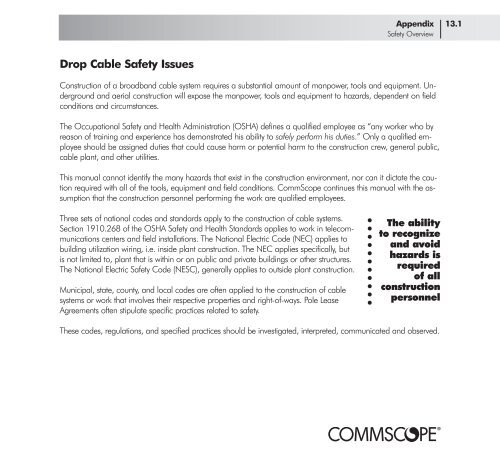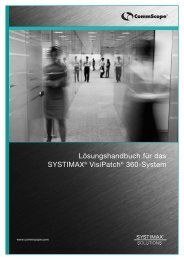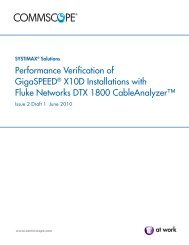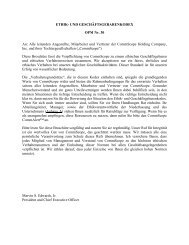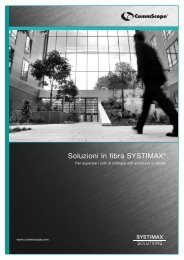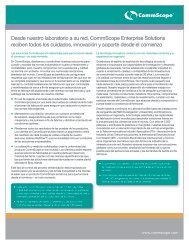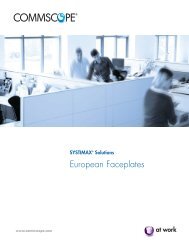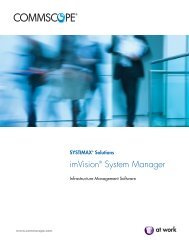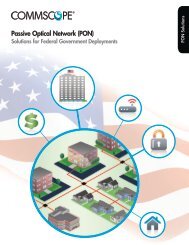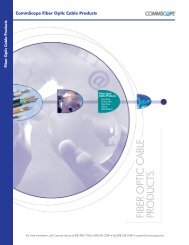Broadband Applications & Construction Manual - Public - CommScope
Broadband Applications & Construction Manual - Public - CommScope
Broadband Applications & Construction Manual - Public - CommScope
Create successful ePaper yourself
Turn your PDF publications into a flip-book with our unique Google optimized e-Paper software.
Drop Cable Safety Issues<br />
<strong>Construction</strong> of a broadband cable system requires a substantial amount of manpower, tools and equipment. Underground<br />
and aerial construction will expose the manpower, tools and equipment to hazards, dependent on field<br />
conditions and circumstances.<br />
The Occupational Safety and Health Administration (OSHA) defines a qualified employee as “any worker who by<br />
reason of training and experience has demonstrated his ability to safely perform his duties.” Only a qualified employee<br />
should be assigned duties that could cause harm or potential harm to the construction crew, general public,<br />
cable plant, and other utilities.<br />
This manual cannot identify the many hazards that exist in the construction environment, nor can it dictate the caution<br />
required with all of the tools, equipment and field conditions. <strong>CommScope</strong> continues this manual with the assumption<br />
that the construction personnel performing the work are qualified employees.<br />
Three sets of national codes and standards apply to the construction of cable systems.<br />
Section 1910.268 of the OSHA Safety and Health Standards applies to work in telecommunications<br />
centers and field installations. The National Electric Code (NEC) applies to<br />
building utilization wiring, i.e. inside plant construction. The NEC applies specifically, but<br />
is not limited to, plant that is within or on public and private buildings or other structures.<br />
The National Electric Safety Code (NESC), generally applies to outside plant construction.<br />
Municipal, state, county, and local codes are often applied to the construction of cable<br />
systems or work that involves their respective properties and right-of-ways. Pole Lease<br />
Agreements often stipulate specific practices related to safety.<br />
Appendix 13.1<br />
Safety Overview<br />
The ability<br />
to recognize<br />
and avoid<br />
hazards is<br />
required<br />
of all<br />
construction<br />
personnel<br />
These codes, regulations, and specified practices should be investigated, interpreted, communicated and observed.


